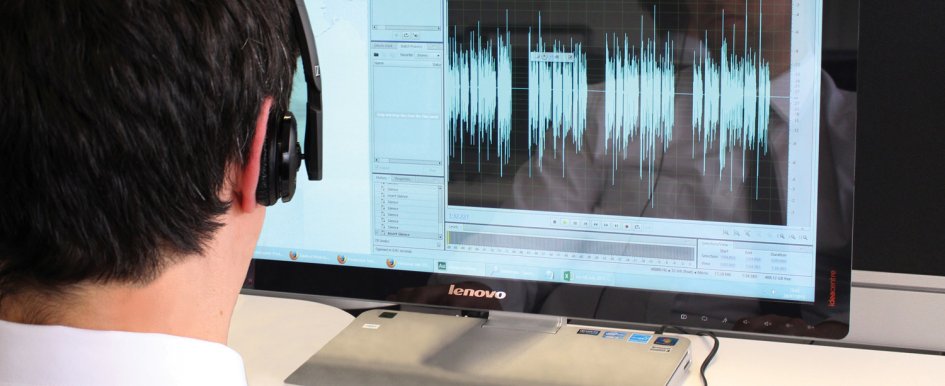
Trust is a vital component to success in the construction industry. Of course, trust is important for any business, but the emphasis is particularly strong in an industry where customers place the success of major products firmly in the hands of others. Consequently, it is essential for firms to instil confidence in customers from the outset. Your business must communicate a commitment to first-class service and a high-quality end product. That is why branding is key to your company’s success.
The importance of visual branding is well-established at this point, as first impressions count for a lot and customers are less likely to buy from an organization if it doesn’t have a professional appearance. If a company doesn’t look reputable, then it sends a negative message about its business capabilities.
Construction companies tend to invest the majority of their marketing budgets on visual collateral, such as signage and websites, based on the belief that this is the main way to reinforce the intended brand image and company values. However, too few organizations create the audio to match the visual branding. How your business sounds to potential customers should be a key component of your marketing strategy. Hearing is one of our most powerful senses. It is capable of prompting brand recall and recognition and having a profound effect on our subconscious. So, why is sound so often ignored?
Audio branding is often seen as a practice of large, multinational organizations with an unlimited marketing budget, but this shouldn’t be the case. Sound is used across a company, no matter how large it is. Audio branding could apply to television advertising or sounds heard on a company’s premises, but by far, the largest application of audio branding is on the telephone. Many customers still use the telephone to enquire about potential construction work, making it a key source of inbound leads. If callers are greeted with inappropriate music or an unsuitable voice, it could prove to be damaging and affect business profitability.
Square Peg, Round Hole
Songs have the ability to remind a listener of a certain moment in time, but what happens if that memory is a negative one? When on hold, most companies believe using a popular track is an easy way to keep callers engaged and entertained. But if the song prompts the resurfacing of an undesirable memory, it could work in the opposite way. Also, it is unlikely that the track will communicate the exact same values that your existing branding already depicts, so trying to make it fit is a “square peg, round hole” scenario. The same goes for the voice speaking while on hold. Simply getting an employee to read a script can present a detrimental image of the company. By carefully selecting an audio brand that is congruent to the organization’s existing visual branding, it ensures the professional image of the company is strengthened, while enhancing the desired brand values and ultimately creating a positive impression.

The Company Voice
When it comes to choosing your voice, there are a number of different attributes to consider. What gender should it be? How old? Should an accent be used? Customers want to know they are choosing a trustworthy business to complete a project. As a result, research has found that the typical voice of the industry is a combination of both male and female, with strong senses of character and engaging, friendly delivery styles.
In terms of gender, it is easy to just pick a voice based on the industry stereotype. While it is important to speak to a listener in a way they best understand, it is necessary to consider the brand’s unique identity and build a customized audio brand solution around it. A masculine voice is typically perceived as authoritative and experienced, while the female voice is perceived as soft and welcoming, which both have the potential to work together to provide a subconscious reassurance that the customer is in safe hands.
An older age profile also helps to do this, conveying dependability and working to reassure customers of the organization’s expertise and professionalism. However, if the visual branding portrays your services and products as fun and exciting, it might be better to employ a younger voice in your audio. The cheerful delivery style enables customers to feel like they are connecting with the firm on a personal level, making them more likely to trust the company.
If your firm operates in a certain geographical area with a strong regional identity, it could be beneficial to incorporate an accent into the company voice. An accent helps to assert a sense of belonging and also helps to resonate with the listener by speaking to them in a manner to which they can relate.
Music to Match
Just like with voice, music cannot be made to convey an unintended message. Creating a new music track unique to the business will avoid stirring preconceived ideas and complements the existing brand values. Physical attributes, such as volume, pitch and tempo, should all be considered and are used to communicate emotional meaning and reinforce the characteristics of the voice. The construction industry has been found to use music which is fast-paced, employing a mixture of live and electronic instrumentation to reflect the positive, optimistic qualities of the business.
Don’t Fall Foul of Fatigue
The right combination of voice and music can bring numerous benefits to a business and have a profound effect on the customer’s subconscious. It works as a subtle yet powerful marketing tool, with the listener assimilating sales messages without even knowing they are doing so, which influences buying behavior. However, sound fatigue can stem from the overplaying of messages. When listening to a song on repeat, there can often be an unconscious switch to boredom and tuning the audio out. Similarly, if a customer hears the same thing each time they call a company, they will eventually reach a point where they simply switch off and the messages will ultimately prove meaningless. Refreshing the content on a regular basis not only ensures customers are kept updated with the latest business information, such as additional services or newly-acquired accreditations, but also prevents hang-ups by keeping callers engaged.
Understandably, the number of variables to consider when deploying an audio brand may seem daunting. When put in place correctly, though, it forms an invaluable part of the marketing mix. In fact, a recent survey by PHMG of 2,234 American consumers discovered 65 percent of customers feel more valued if they hear customized voice and music messages when kept on hold by a company. By exerting greater control over this key aspect, construction firms can ensure their brand image is protected and a lasting, positive impression is created.
